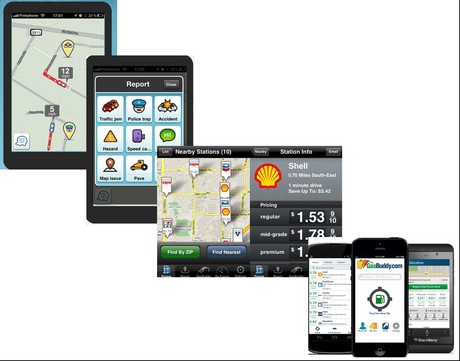Mobile Crowdsourcing Apps
From Waze to Weather to Citizen Reporting and Beyond
More and more, companies, governments, and the crowd itself looks to mobile crowdsourced information to enhance their experiences. Note, though, that there are different uses for real-time information, which is valuable only as long as it is up-to-the-minute, versus user-generated content that becomes more valuable over time as it is aggregated, analyzed, categorized, and made available to help individuals make decision and provides organizations with ideas for their next innovations.
NETTING IT OUT
Offering mobile applications is a great way to solicit user-generated content. Real-time crowdsourcing apps, such as Waze—which combines GPS navigation with crowd-provided incident reporting (such as accidents and construction), or Minutely—which lets individuals “correct” the weather report by contributing what is actually happening, weather-wise, at their exact locations, help people navigate their lives by offering up-to-the minute context.
Non-real-time crowdsourcing apps, such as 7-Eleven’s Idea Hub, allow individuals to contribute suggestions for innovations from their mobile phone, whereas mobile apps such as WalkJogRun let people map new trails and contribute them to a database of trail options for others to enjoy.
Waze Crowdsourced GPS
© 2013 Waze Mobile, GasBuddy.com, and Patricia Seybold Group Inc.
1. From left to right: Waze identifies where there are traffic slowdowns on your route, allows you to report traffic incidents by clicking on an icon or via voice, and locates the nearest and least expensive gas stations—similar to another real-time crowdsourced app, GasBuddy.com.
EPHEMERAL VERSUS LASTING CROWDSOURCED INFORMATION
Benefits of User-Generated Content
Crowdsourcing is a very catchy (and accurate) term for soliciting and gathering user-generated content. And user-generated content is valuable in many ways:
- Cheap. It is an inexpensive (or even free) way to get content for your applications or websites.
- Varied. By soliciting content from users in different demographics and different locations, you can populate your apps and sites with content from a large range of perspectives.
- Timely. Without having a huge staff of researchers, you can obtain up-to-the-minute, real-time information.
Real-Time versus Non-Real-Time User-Generated Content
In applications that help customers deal with their world, real-time context is invaluable! However, as valuable as it is, it is important to understand that….(more)
(Download the PDF to read the entire article.)
Sign in to download the full article
0 comments
Be the first one to comment.




